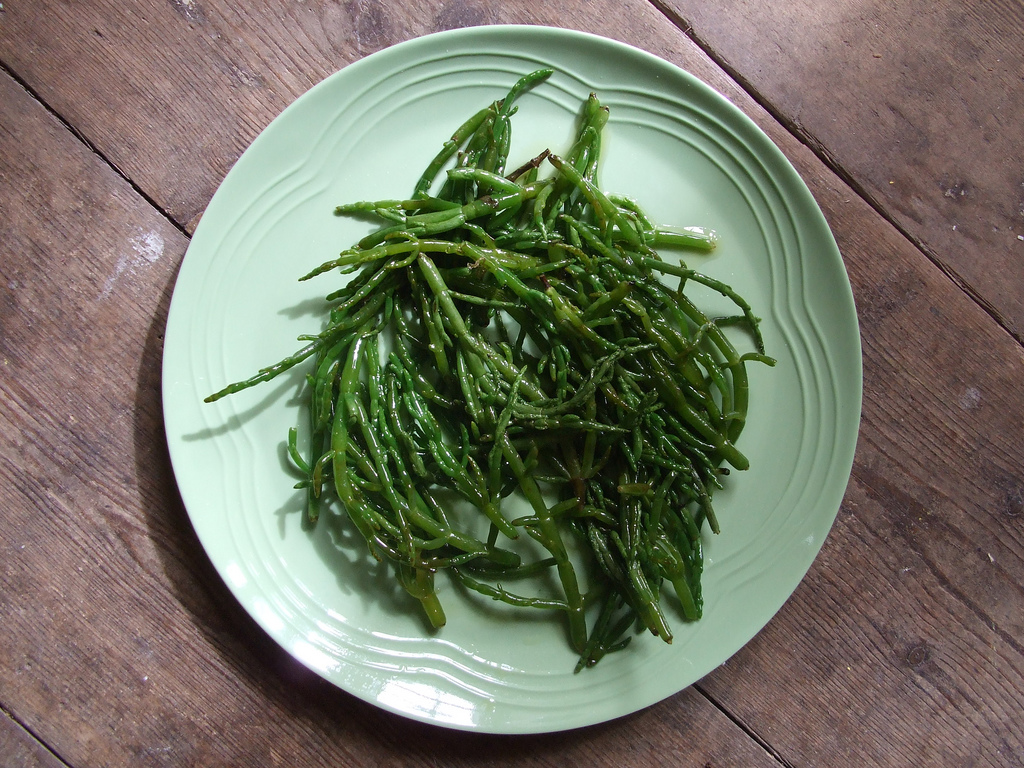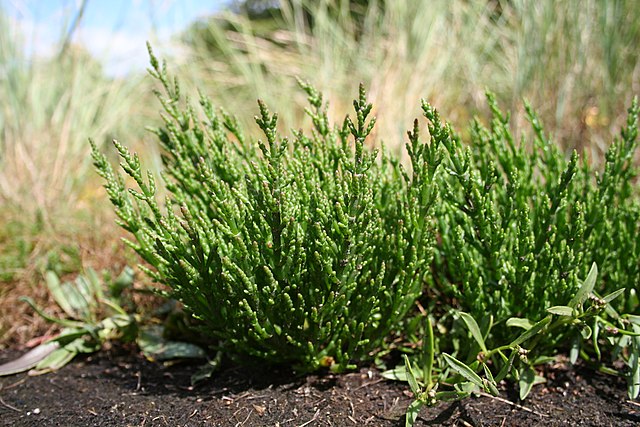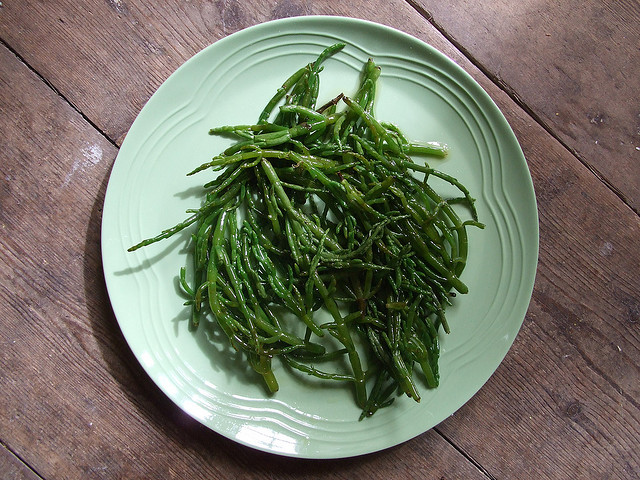It’s Samphire Season!

Samphire is up there with artichokes as a plant that doesn’t look like it was meant to be eaten, and with fiddlehead ferns as one of the most satisfying plants to forage. And, despite some abysmal weather, samphire season is well underway in the UK.
Rather unappetisingly known as marsh samphire, this flatland plant — species of which can be found in Australia, the Americas and Asia, as well as Europe — flourishes in salty environments. Here it is, growing on the English coast.
For all its weird looks, samphire tastes like the asparagus of the sea. As with artichokes, there’s a real pleasure in ripping the soft flesh off the stringy core with your teeth.
How to cook it? Well, the first rule is to rinse it thoroughly, to get rid of all the sand and grit. The second is not to use salt. Samphire has salt aplenty, and some even like to blanch it once or twice in fresh water to remove some of the salt before sauteeing in either butter or olive oil. It looks prettier if you trim off the inedible roots, but earthier if you leave them on…
Alternatives? A Norfolk tradition is serving it with vinegar and black pepper (one of samphire’s many alternative names is pickleweed. A few diehards will eat it raw (try it with cucumber as a summer salad) but I like it simply blanched and served with butter.
The sea taste and its coastal home makes samphire a great seasonal accompaniment to all sorts of fish, particularly salmon, which has a mild flavour that pairs well with samphire’s robustness. You could even try it cooked Bedouin style.
Samphire is in season in July and August in the UK and France. Your best bet for sourcing some is either high-end grocers in the cities or traditional fishmongers in the coastal towns. The Australian season is generally November and December.
Thanks to Denna Jones and Marco Schmidt for the images.

